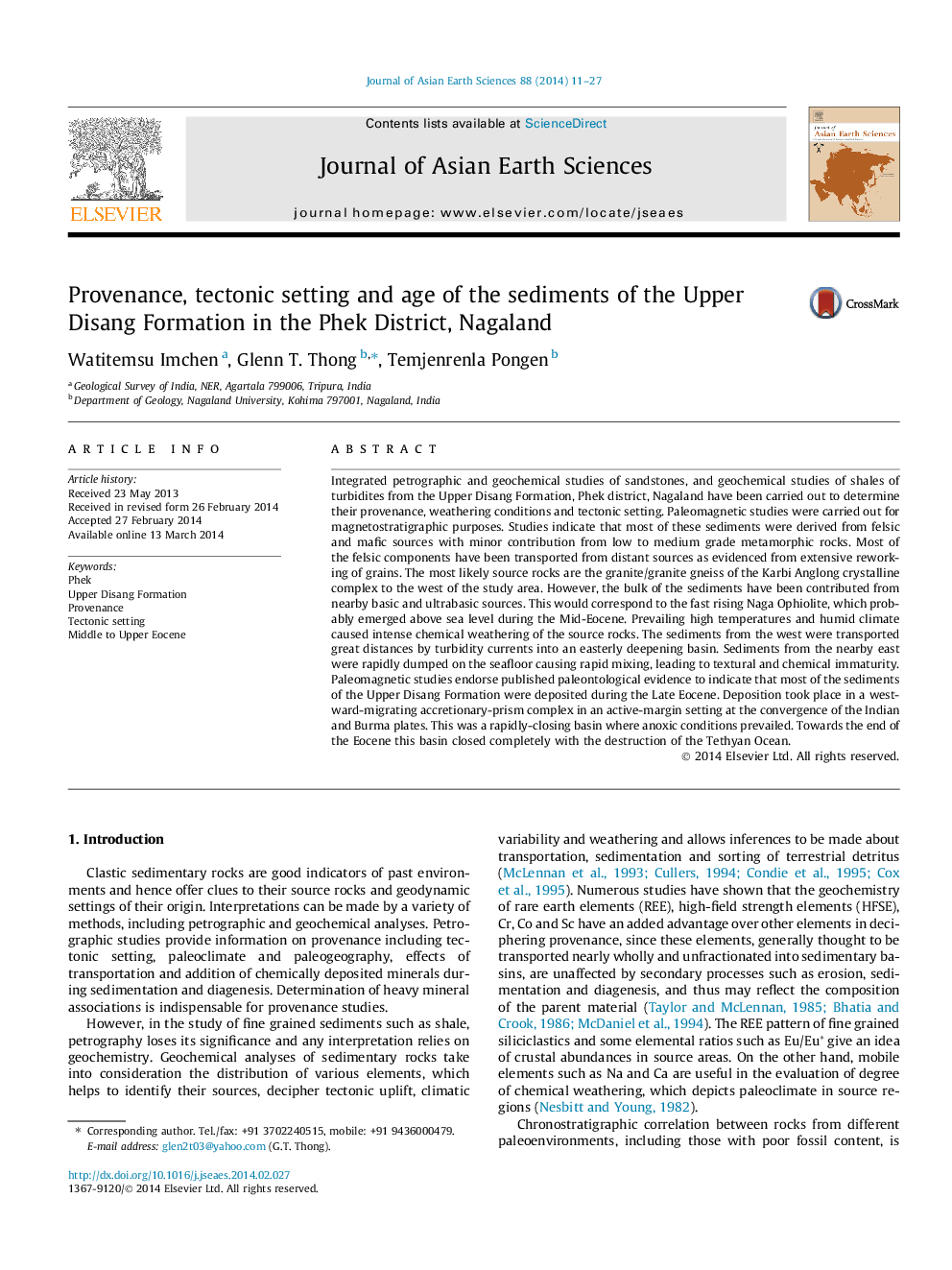| کد مقاله | کد نشریه | سال انتشار | مقاله انگلیسی | نسخه تمام متن |
|---|---|---|---|---|
| 4730663 | 1640380 | 2014 | 17 صفحه PDF | دانلود رایگان |
• Acid, basic, ultrabasic and metamorphic rocks contributed to these sediments.
• Chemical weathering and erosion of rocks was under harsh climatic conditions.
• Deposition began during the upper Middle Eocene and continued till the Late Eocene.
• Distant sediments were transported by turbidity currents along an easterly dipping seafloor.
Integrated petrographic and geochemical studies of sandstones, and geochemical studies of shales of turbidites from the Upper Disang Formation, Phek district, Nagaland have been carried out to determine their provenance, weathering conditions and tectonic setting. Paleomagnetic studies were carried out for magnetostratigraphic purposes. Studies indicate that most of these sediments were derived from felsic and mafic sources with minor contribution from low to medium grade metamorphic rocks. Most of the felsic components have been transported from distant sources as evidenced from extensive reworking of grains. The most likely source rocks are the granite/granite gneiss of the Karbi Anglong crystalline complex to the west of the study area. However, the bulk of the sediments have been contributed from nearby basic and ultrabasic sources. This would correspond to the fast rising Naga Ophiolite, which probably emerged above sea level during the Mid-Eocene. Prevailing high temperatures and humid climate caused intense chemical weathering of the source rocks. The sediments from the west were transported great distances by turbidity currents into an easterly deepening basin. Sediments from the nearby east were rapidly dumped on the seafloor causing rapid mixing, leading to textural and chemical immaturity. Paleomagnetic studies endorse published paleontological evidence to indicate that most of the sediments of the Upper Disang Formation were deposited during the Late Eocene. Deposition took place in a westward-migrating accretionary-prism complex in an active-margin setting at the convergence of the Indian and Burma plates. This was a rapidly-closing basin where anoxic conditions prevailed. Towards the end of the Eocene this basin closed completely with the destruction of the Tethyan Ocean.
Figure optionsDownload as PowerPoint slide
Journal: Journal of Asian Earth Sciences - Volume 88, 1 July 2014, Pages 11–27
